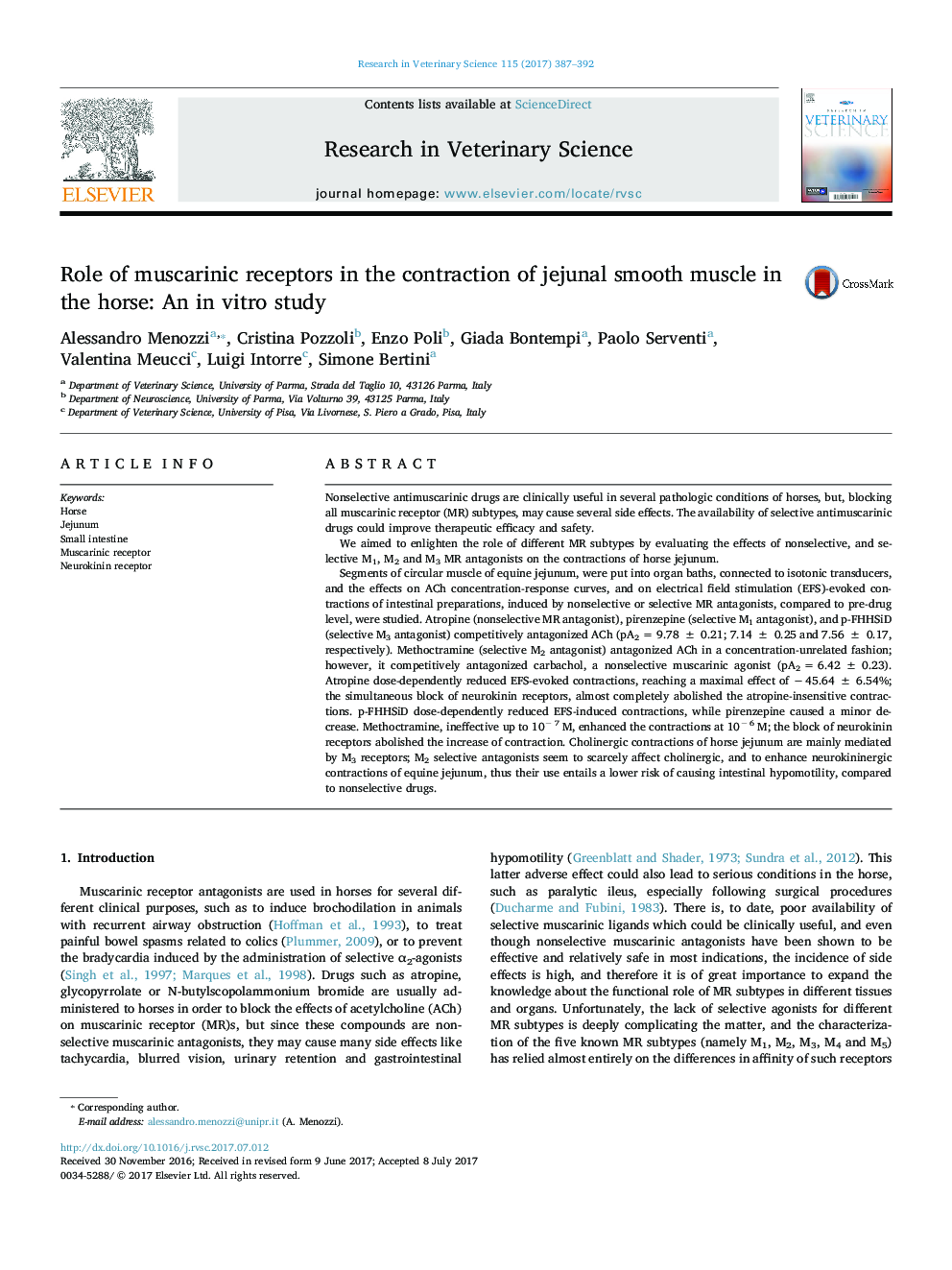| Article ID | Journal | Published Year | Pages | File Type |
|---|---|---|---|---|
| 5543852 | Research in Veterinary Science | 2017 | 6 Pages |
Abstract
Segments of circular muscle of equine jejunum, were put into organ baths, connected to isotonic transducers, and the effects on ACh concentration-response curves, and on electrical field stimulation (EFS)-evoked contractions of intestinal preparations, induced by nonselective or selective MR antagonists, compared to pre-drug level, were studied. Atropine (nonselective MR antagonist), pirenzepine (selective M1 antagonist), and p-FHHSiD (selective M3 antagonist) competitively antagonized ACh (pA2 = 9.78 ± 0.21; 7.14 ± 0.25 and 7.56 ± 0.17, respectively). Methoctramine (selective M2 antagonist) antagonized ACh in a concentration-unrelated fashion; however, it competitively antagonized carbachol, a nonselective muscarinic agonist (pA2 = 6.42 ± 0.23). Atropine dose-dependently reduced EFS-evoked contractions, reaching a maximal effect of â 45.64 ± 6.54%; the simultaneous block of neurokinin receptors, almost completely abolished the atropine-insensitive contractions. p-FHHSiD dose-dependently reduced EFS-induced contractions, while pirenzepine caused a minor decrease. Methoctramine, ineffective up to 10â 7 M, enhanced the contractions at 10â 6 M; the block of neurokinin receptors abolished the increase of contraction. Cholinergic contractions of horse jejunum are mainly mediated by M3 receptors; M2 selective antagonists seem to scarcely affect cholinergic, and to enhance neurokininergic contractions of equine jejunum, thus their use entails a lower risk of causing intestinal hypomotility, compared to nonselective drugs.
Related Topics
Life Sciences
Agricultural and Biological Sciences
Animal Science and Zoology
Authors
Alessandro Menozzi, Cristina Pozzoli, Enzo Poli, Giada Bontempi, Paolo Serventi, Valentina Meucci, Luigi Intorre, Simone Bertini,
